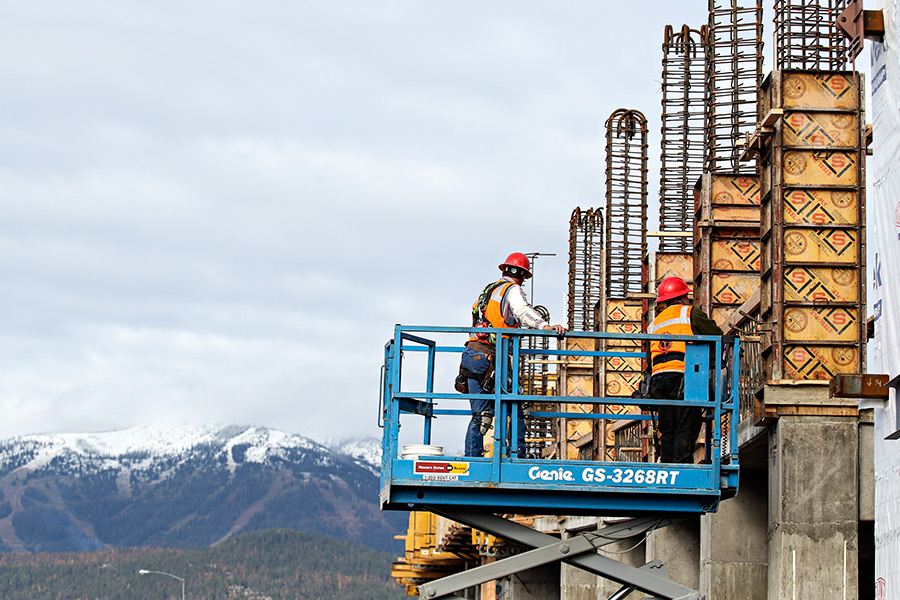WHITEFISH — No longer a glimmer in the city’s eye, a new civic centerpiece is emerging on the corner of 2nd Street and Baker Avenue, where construction crews are six months away from completing the new municipal building and adjacent parking structure that will anchor the town’s city services.
It’s been a year since demolition began of the historic city hall, and after a series of stumbling blocks in the early phases of construction, including a budget overrun that caused the project’s price tag to balloon from $14.95 million to more than $16 million, a new future is rising from the rubble.
Once a mere architectural rendering, the sketched outlines of Whitefish’s new city hall and parking structure are filling in with the project’s most prominent features and design elements, including a pair of arched windows facing the downtown corridor, as well as its red-brick façade, a nod to the old city hall, and towering banks of windows flanking Baker Avenue and 2nd Street. A grand staircase leads from the two-story open lobby to the floors above, and a skylight floods the community space with natural light.
To the north, the behemoth parking structure is nearing completion, at which point an additional 211 spaces will join the downtown core’s limited inventory, relieving congestion for motorists, pedestrians and downtown businesses. The 84,000-square-feet structure rises three stories and will include 3,000 square feet of retail space, which the city plans to lease out.
A throwback to the original city hall’s architecture, a “sophisticated Whitefish aesthetic” runs throughout the “timeless design,” according to plans, and the use of natural materials are transforming the structure into a building that matches Whitefish’s unique style and character — a leading factor in the amount of time invested in finalizing a design schematic.
Facing out onto both Baker Avenue and 2nd Street, the new municipal buildings occupy prominent real estate in Whitefish’s downtown center, and its third-floor spaces offer stunning views of Big Mountain.
“It’s coming along really well,” Mike Cronquist, the city’s project manager, said. “It’s really taking form and shape, and I’m pleased with the progress and how things are coming together. It’s going to be a top-notch facility.”
A new city hall building has been in the cards for Whitefish since 1987 when it was identified as a priority in an urban renewal plan. In 2005, a downtown master plan also specified the need for a new facility.
Whitefish city employees were spread out across several locations and the existing building and council chambers had grown outmoded, according to the downtown master plan. The city looked at remodeling the existing building, but it wasn’t logistically or financially feasible due to structural deficiencies.
In 2011, the city council established a steering committee to help usher the divisive project to fruition, and city leaders ultimately settled on the new city hall building with an adjacent parking structure.
In late October 2015, crews began demolishing the 97-year-old historic city hall and embarked on the project in earnest, but quickly encountered poor soil conditions and contaminated soil that required cleanup, as well as swelling prices for materials.
Since the construction moved above ground, Cronquist said there have been no major issues, and his most recent report to council states that the project was 65 percent complete at the end of October.
Meanwhile, concrete work is 75 percent complete, while interior framing is 85 percent complete.
“Once we got out of the mud, things have been moving along smoothly,” Cronquist said.
Set for completion in early April, city staff will move into their new digs in May.
All costs of the project are paid from the accumulated savings of the tax-increment finance fund, which culls a reserve of property tax collections and allows the funds to be used for infrastructure improvements.
